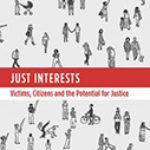The Great Uprising: Race Riots In Urban America During The 1960s

Author: Peter B. Levy
Publisher: Cambridge, UK; New York: Cambridge University Press, 2018. 344p.
Reviewer: Russ Immarigeon | October 2018
At least 525 American cities were affected by urban rioting or revolts between 1962 and 1973, with especially intense conflagrations occurring in the summer of 1967 and, a year later, in the aftermath of the Rev. Martin Luther King, Jr.’s assassination in Memphis, Tennessee. Harsh measures of these events included deaths (125), injuries (as many as 7,000), arrests (45,000) and property damage ($900 million in today’s dollars).
Fifty years later, at least a handful of new books have appeared to revisit and examine anew the “Great Uprising” of that earlier era. The best-selling National Advisory Commission on Civil Disorders (NACCD) report – the Kerner Report, named after its co-chairman, former Illinois Governor Otto Kerner – has been reissued with an updated introduction (NACCD, 2016). In addition, a preliminary, some thought incendiary – and never-before published – report of the speedily-completed Commission, “The Harvest of American Racism,” has just been released, with commentary from its surviving researchers (Shellow, 2018). Also, other important volumes have come out assessing the Commission’s long-term legacy (Gillon, 2018; Harris and Curtis, 2018; and Hrach, 2016).
In this volume, York College (Pennsylvania) historian Peter B. Levy offers case studies of urban revolt in three cities – Cambridge, Maryland; Baltimore, Maryland; and York, Pennsylvania – during this period of uprisings in the still-vibrant civil rights movement. In each of these descriptive studies, Levy begins with “the history of the long black freedom struggle,” then he describes the history of each of these revolts, and finally he assesses their local and national impact on “ordinary” citizens and public policy. Levy’s methodical approach is designed “to counter the tendency to see riots as spontaneous and apolitical explosions of violence disconnected from long-standing locally-based efforts to alter the racial status quo.”
Levy, who has written previously on the Cambridge revolt (Levy, 2003), challenges commonplace conservative and liberal perspectives on these urban uprisings. Conservative commentary tended to assign the causation of these events to “outside agitators” such as H. Rap Brown. Liberals, along lines spelled out in the Kerner Commission’s report, stressed “ghetto” conditions and police-involved incidents.
Levy’s case studies assert that “the revolts were not caused by radicals or riot makers; instead, they lend weight to the Kerner Commission’s interpretation that social and economic conditions underlay them. Yet, at the same time, by placing each community within historical context, by chronicling the long course of their struggles for racial equality and white resistance to altering the racial status quo, these three studies …. Demonstrate that the Great Uprising was a product of the long civil rights movement, the Great Migration, and the political economy of the postwar era, which raised but left unfulfilled the expectations of black migrants, who expected that by changing their geographic place (i.e., moving from the rural south to the north), they would change places socially and economically.”
As Levy reports in rich detail, the events in these small, medium-sized, and large cities did not simply result in a “white backlash.” They were, in fact, a consequence of the resistance of white community leaders and others to the uplifting aspirations of black American citizens.
For this study, Levy used oral histories and trial transcripts, among other sources of information, to describe “what took place and why.” Levy’s comprehensiveness clearly sharpened his deep reporting of events in these cities, but it also honed his assessment of the implications of these events:
“As contemporaries from Martin Luther King Jr. to H. Rap Brown observed, and as most historians have agreed, the Great Uprising demonstrated the inadequacies or shortcomings of the civil rights movement, waking up the nation to the fact that the enactment of the Civil Rights Act of 1964 and the Voting Rights Act of 1965 did not signify the fulfillment of the black freedom struggle. In recognition of these shortcomings, King, SNCC (Student Nonviolent Coordinating Committee), and others reoriented their efforts in an attempt to speak to and for those who had participated in the revolts.”
“The Great Uprising challenged the primacy of nonviolence as a means to overcoming racial inequality and boosted the fortunes of both the Black Power movement and the New Right. Moreover, the revolts provided cover or additional justification for a variety of repressive measures, from the expansion of COINTELPRO (Counter Intelligence Program) to the enactment of gun control, all of which helped lay the groundwork for the war on crime and the rise of the carceral state. Just as significantly, the uprisings demonstrated, for those who continued to believe otherwise, that race was not a Southern problem but rather one that knew no regional bounds.”
References:
Gillon, Steven M. (2018). Separate and Unequal: The Kerner Commission and the Unraveling of American Liberalism. New York: Basic Books.
Harris, Fred and Alan Curtis (2018). Healing Our Divided Society: Investing in America Fifty Years after the Kerner Report. Philadelphia, PA: Temple University Press.
Hrach, Thomas J. (2016). The Riot Report and the News: How the Kerner Commission Changed Media Coverage of Black America. Amherst, MA: The University of Massachusetts Press.
Levy, Peter B. (2003). Civil War on Race Street: The Civil Rights Movement in Cambridge, Maryland. Gainesville, FL: University Press of Florida.
The National Advisory Commission on Civil Disorders (2016). The Kerner Report. Princeton, NJ: Princeton University Press.
Shellow, Robert (2018). The Harvest of American Racism: The Political Meaning of Violence in the Summer of 1967. Ann Arbor, MI: The University of Michigan Press. Satire from The Borowitz Report
Russ Immarigeon, Editor of Offender Programs Report and Women, Girls and Criminal Justice


